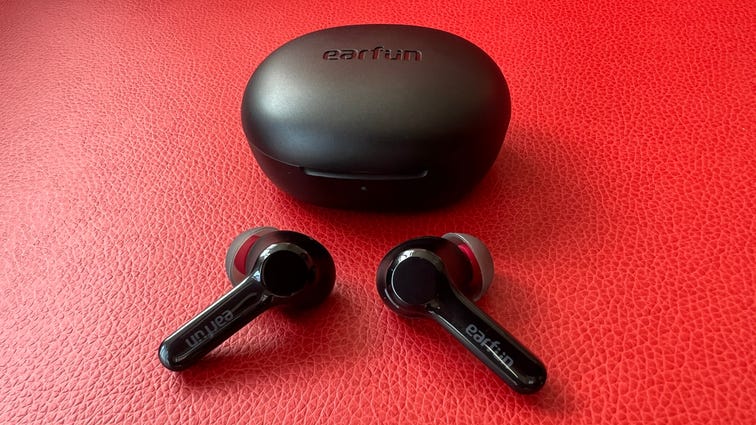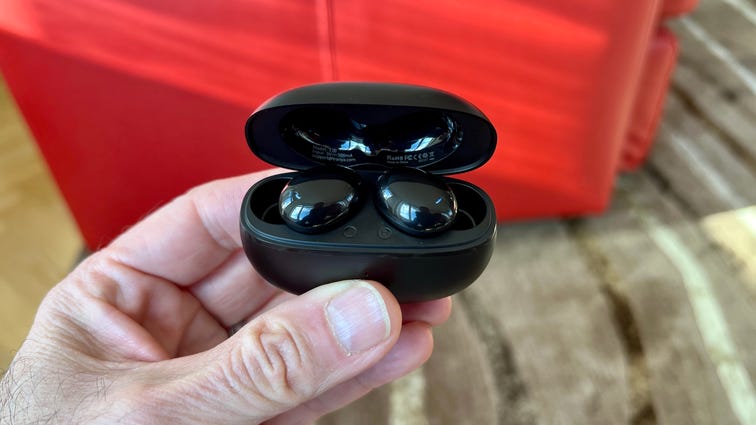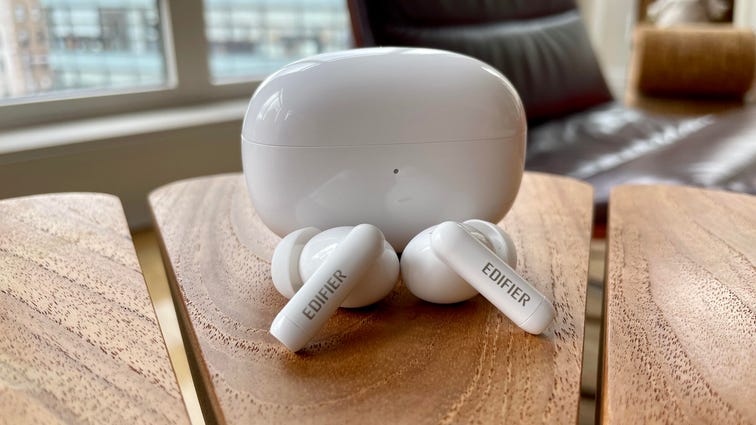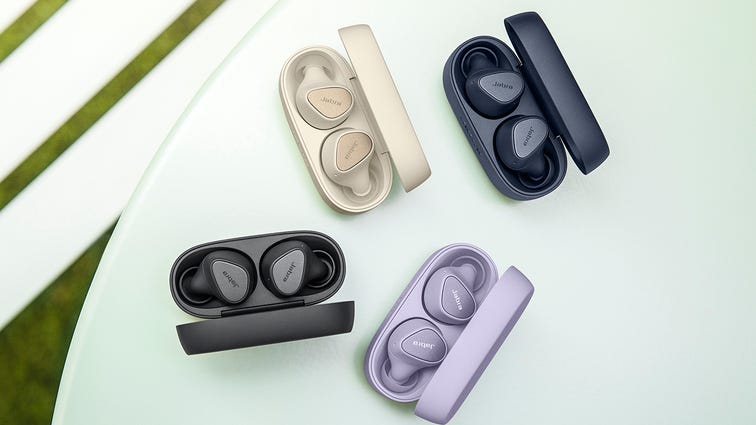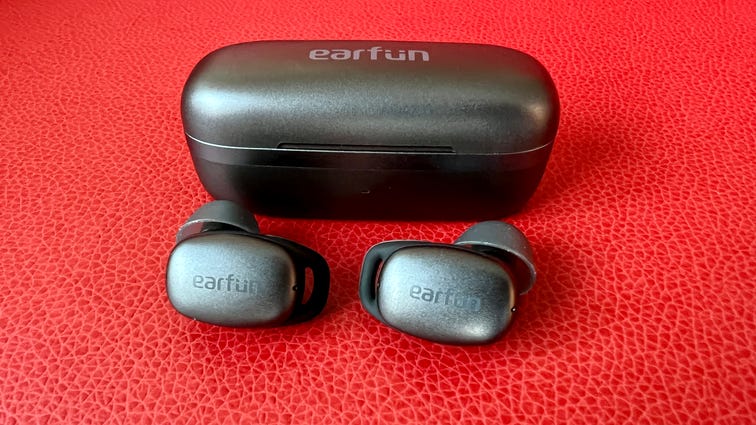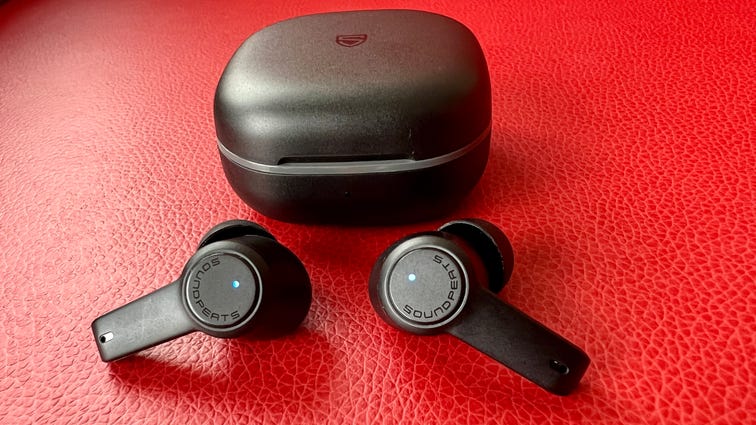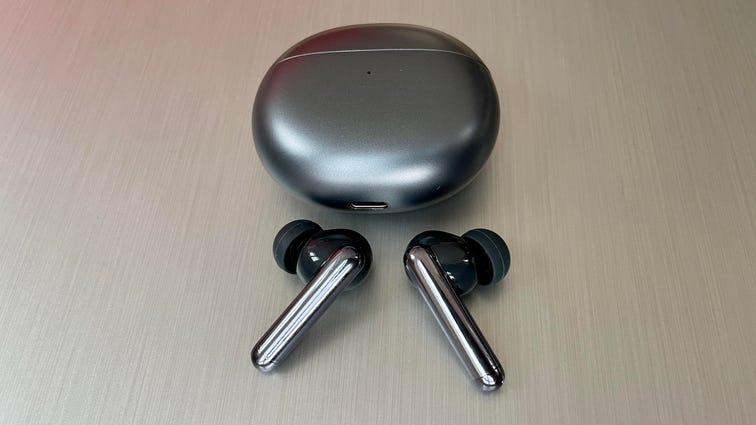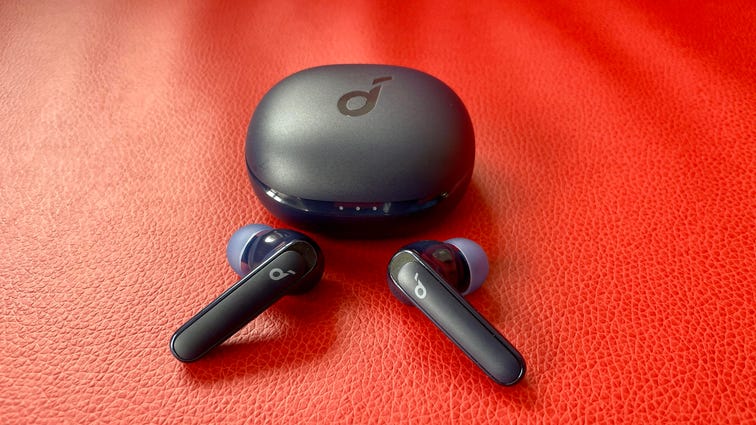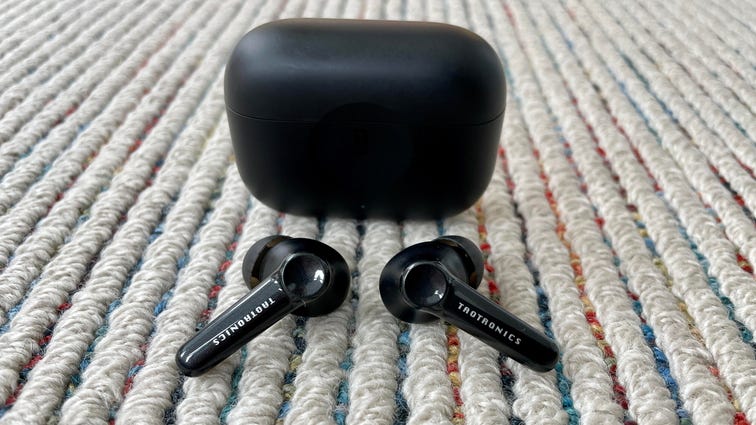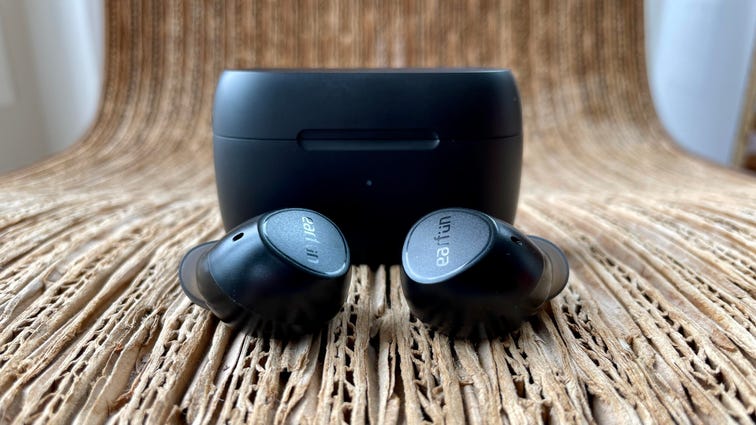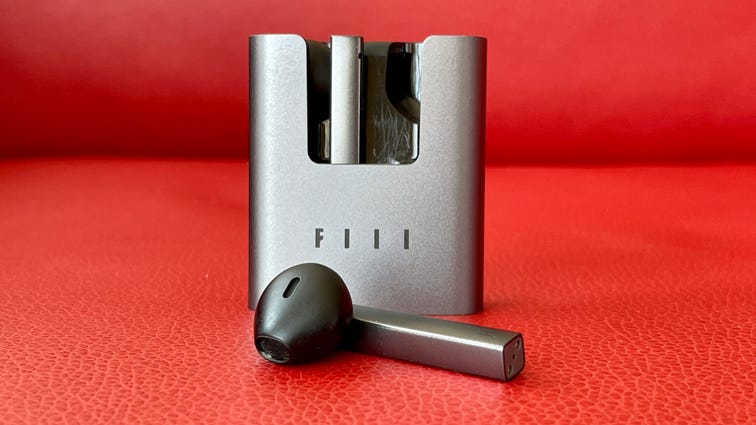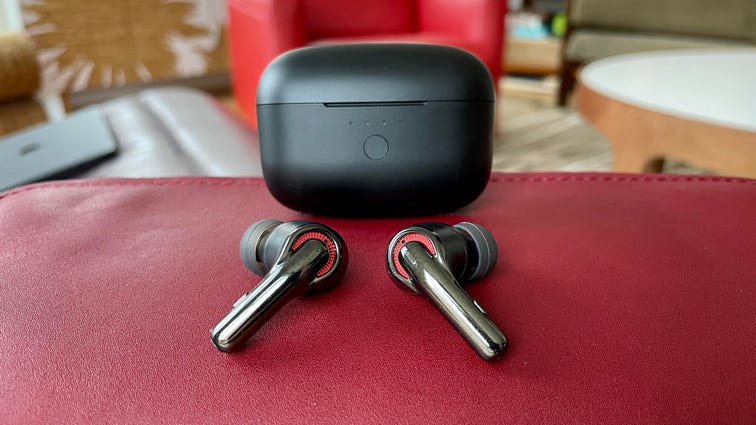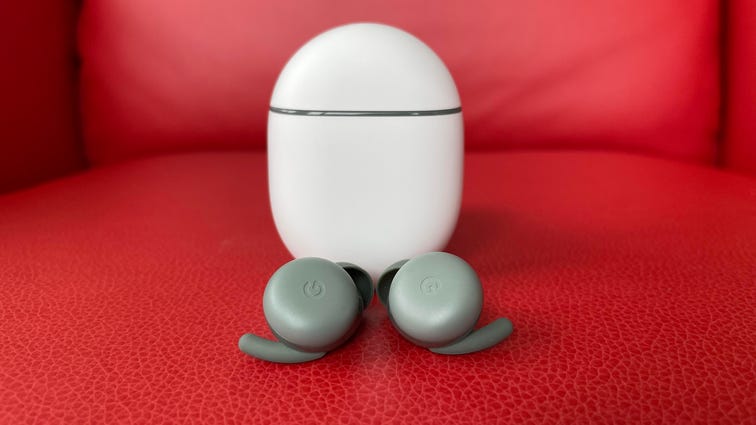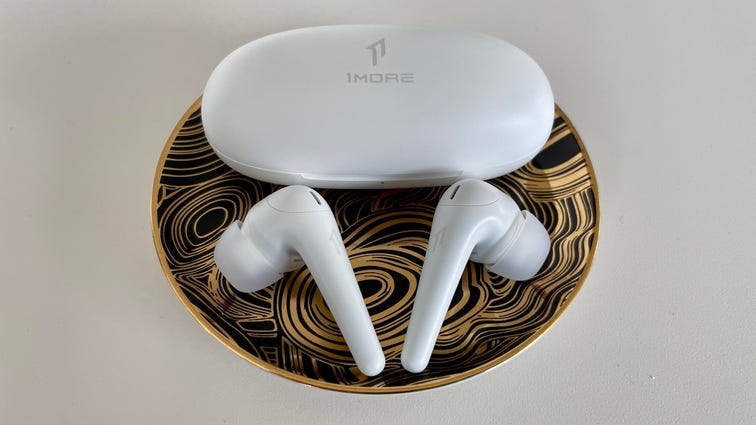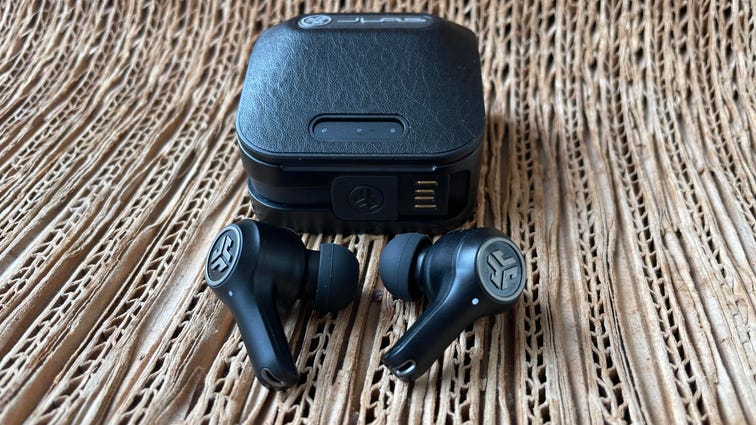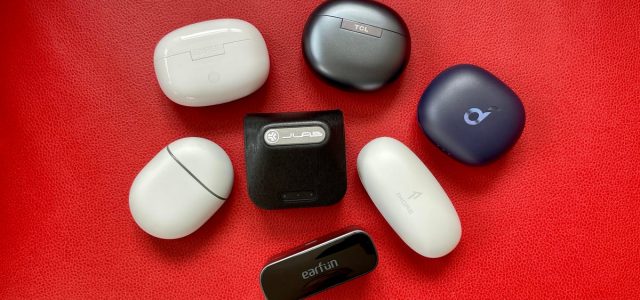
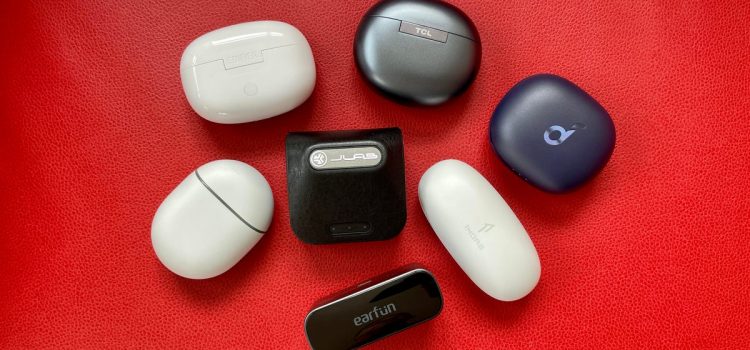

If you don’t feel like splurging on AirPods, there are plenty of budget-friendly alternatives. I’ve tested a variety of affordable true wireless earphones to help you find the best value. All of the true wireless earphones I tested are $100 or less — some even cost less than $50 and still have good quality sound. Even though they’re cheaper than AirPods, they’re all equipped with Bluetooth 5.0 or higher. Plus, they smoothly maintain wireless audio connections with minimal Bluetooth pairing hiccups.
These budget wireless earbuds also worked well for making phone calls — and in some cases really well. I’ve also included info on battery life, as well as how water-resistant they are, in case you’re interested in using these for running or the gym. I’ll update this list as new affordable earphones are released.
Read more: Best Wireless Earbuds for 2022
Do cheap earbuds sound as good as the AirPods 3rd gen and AirPods Pro?
Apple improved the sound quality of the third-gen AirPods so it raised the sound bar. That said, many true wireless earbuds that cost less than $100 or even less than $50 offer surprisingly good sound for the money and measure up pretty well against the AirPods and AirPods Pro, which sound good but not as quite good as they should for their high price.
What are the biggest differences between cheaper buds and more premium buds?
Often, the biggest difference is build quality. Premium buds tend to feel sturdier and tend to be built with more premium materials. They also have a more premium look and feel to both the buds themselves and their charging case. In theory, premium buds should hold up better over time. Additionally, they tend to have more features such as ear-detection sensors and they pair with a companion app so you can upgrade the firmware (as well as tweak the sound and possibly customize the controls). Finally, while some cheaper buds have active noise canceling, the performance of the noise-canceling and transparency modes tends to be better with more premium buds.
Do cheap earbuds work well for making voice calls?
Some do. Many cheaper buds now feature multiple microphones and some do a surprisingly good job when it comes to voice calling. A few models on this list have surprisingly good noise reduction and measure up well against the AirPods, which are known for their strong voice-calling performance.
David Carnoy/CNET
The Earfun Air Pro 2 not only feature solid active noise cancellation but their sound is also impressive for their relatively modest price, with overall well-balanced sound, decent clarity and solid bass performance. Some of Earfun’s buds have had a bit too much treble push — sometimes referred to as “presence boost” — but these mostly manage to avoid that. They do sound better than the original Air Pro.
The earbuds have some extra features, like an ear-detection sensor (your music pauses when you take the buds out of your ears) and a case that has USB-C and wireless charging, that you don’t often find at this price. Equipped with Bluetooth 5.2, they’re splash-proof with an IPX5 rating and offer up to seven hours of battery life on a single charge at moderate volume levels, though you’ll probably get closer to six hours with noise canceling on.
There’s also a transparency mode that lets ambient sound in. It actually sounds pretty natural and is closer than I thought it would to the AirPods Pro’s excellent transparency mode. Alas, there’s no companion app that allows you to tweak the sound or upgrade the firmware.
Earfun talks up the Air Pro 2’s voice calling capabilities — the buds have three microphones in each earbud — and I thought call performance was good but these didn’t reduce background noise as much the new Soundpeats T3, which are also good for the money ($40). However, while the Soundpeats T3 are better for calls, the Earfun Air Pro 2’s noise-canceling and transparency modes are superior and the Soundpeats don’t have the ear-detection sensor. Also, the Earfun Air Pro 2 buds sound better, with richer, more dynamic sound.
David Carnoy/CNET
The Tranya T20 remind me a little of a cheaper version of Samsung’s Galaxy Buds 2 without the noise canceling. They’re pretty no-frills and is missing more premium features such as an ear-detection sensor that automatically pauses your music when you take a bud out of your ears. But they sound surprisingly decent for their modest price, if you get a tight seal, they sit pretty flush with your ears (they don’t really stick out much) and they have decent battery life — up to eight hours at moderate volume levels. They also work pretty well for making calls and are IPX7 waterproof.
The case feels a little cheap and the buds are lightweight. The Galaxy Buds 2 definitely feel more premium. However, the buds are well tuned and have a relatively wide soundstage. Don’t expect the world from them and I think you’ll be pleasantly surprised.
David Carnoy/CNET
Edifier has a few different new true-wireless earbuds and most, including the TWS 330NB, are very good true wireless earphone values. While the TWS 330NB buds are missing a sensor that automatically pauses your music when you take them out of your ears, this true wireless earbud features very good sound quality for the money, decent active noise canceling with a transparency mode, and solid voice calling. They have three microphones in each bud for noise canceling and noise reduction during calls.
They fit my ears well — they’re essentially AirPods Pro clones — and while the earphone touch controls are a little limited, they are programmable using the Edifier Connect app for iOS and Android. You can also set the level of touch sensitivity. These budget wireless earbuds have an IP54 rating, which means they’re splash- and dust-proof, and battery life is rated at four hours with noise canceling on and five hours with it off (at moderate volume levels). That’s only OK, but you do get an additional two charges in the charging case.
Jabra
The Jabra Elite 3 headphones are Jabra’s most affordable true-wireless earbuds to date and have a fairly basic feature set, though they offer strong sound and call quality for the money. They have 6mm drivers, four microphones for calls and Jabra’s HearThrough transparency mode. Qualcomm aptX HD audio is supported for aptX-enabled devices.
Battery life is rated at up to seven hours on a single charge at moderate volume levels, with the case storing an extra three full charges (28 hours total). They have an IP55 water-resistance rating, which means they can take a sustained spray of water and are also dust-resistant. As with the other new buds, you can use either bud independently in a mono mode.
While they don’t have such extras as active noise canceling, the Elite 3 earbuds offer solid performance and a comfortable fit for a reasonable price.
David Carnoy/CNET
I was a fan of Earfun’s earlier Free Pro earbuds, which offer good sound for around $50 and have little sport fins that help keep them in your ears securely. Now Earfun has released the Earfun Pro 2 buds with aluminum alloy caps, improved noise canceling and a couple of extra microphones that help boost voice-calling performance.
The Free Pro 2 deliver good sound for their modest price, with decent clarity and deep but well-defined bass. They produce relatively big, open sound. They don’t have such extra features as an ear-detection sensor so your music automatically pauses when you take one or both buds out of your ears, or an app that allows you to update their firmware. But they’re lightweight, should fit most ears well and have decent noise canceling along with a transparency mode. (It’s not as good as the AirPods Pro’s transparency mode, which is hard to beat.)
I found the voice-calling performance good but not great. They did an acceptable job reducing background noise and picking up my voice in noisy environments but they aren’t necessarily top-notch in this department. Battery life is rated at up to six hours, they’re IPX5 splash-proof, and their elongated case (it charges wirelessly) is compact and lightweight. It’s better designed than the Free Pro’s case.
David Carnoy/CNET
The Soundpeats T3 buds have two things going for them aside from their modest price tag: They sound decent and work well for making calls, offering good noise reduction. They’re also comfortable to wear and have both active noise canceling and transparency mode. The noise canceling is only OK, not great (same goes for the transparency mode), but you can’t expect everything for such a low price.
Equipped with Bluetooth 5.2, they’re IPX4 splash-proof and have a battery-life rating of up to 5.5 hours on a single charge at moderate volume levels.
They have relatively smooth, balanced sound and ample bass. They’re not going to wow you with clarity or dynamic sound, but they’re pleasant to listen to, which is all you can ask of a budget set of earbuds.
Callers said that my voice sounded clearer when I was using the AirPods Pro but the Soundpeats actually reduced more background noise that the AirPods Pro. I was able to have conversations on the noisy streets of New York without a problem.
David Carnoy/CNET
TCL is known for its high-quality, high-value Roku-powered TVs, but has moved into the headphones arena in the last few years. I wasn’t too impressed with its earlier models, but its latest wireless earbud Moveaudio S600 delivers excellent sound and good active noise canceling along with decent battery life (up to 6.2 hours with noise canceling on and eight hours with it off, with three extra charges from the charging case). I found that the audio quality of voice calls is decent, but not quite up to the level of the AirPods Pro. The charging case does offer wireless charging.
These budget earbuds are slightly more geared toward Android users — TCL makes budget Android phones after all — and feature Google Fast Pair. That said, this wireless earbud works fine with iPhones and TCL’s companion app is available for iOS and Android (you can customize the sound and touch controls in the app). The earbuds support the AAC audio codec but not aptX.
These automatically pause your music when you pull the earbuds out of your ears and they’re IP54 splash- and dust-proof. The stems are a little long, but the earbuds fit me comfortably and I got a tight seal using the largest ear tips. The S600 is available in three colors.
David Carnoy/CNET
I had the Soundcore Life P2 on this list for a while, but I’ve moved on to the updated Life P3, which have been upgraded with active noise canceling. They’re essentially a more affordable version of the Liberty Air 2 Pro ($130 list) and are missing wireless charging and a wear-detection sensor that automatically pauses your music when you take the earbuds out of your ears. That said, these noise-canceling earbuds sound quite decent (they have a bass-boost mode) and also have good sound quality for making calls. A companion app allows you to tweak the sound a bit, but I mainly stuck with the default sound profile.
Battery life is rated at up to seven hours at moderate volume levels and these offer IPX5 water-resistance, which means they can withstand a sustained spray of water and are splash-proof.
Like with the Liberty Air 2 Pro, I had a little trouble getting a tight seal with the included ear hook tips (it should only impact a small percentage of users), so I used my own. To get optimal sound and noise-canceling performance, it is crucial to get a good seal. There’s also a transparency mode that lets ambient sound in, which works fine but isn’t on par with the AirPods Pro’s excellent transparency mode.
David Carnoy/CNET
TaoTronics’ SoundLiberty P10 are another AirPods Pro knock-off but they’re one of the better models out there for the money, with good sound and decent headset performance for making calls. The noise canceling isn’t up the level of the AIrPods Pro but it’s reasonably effective and there’s also an ambient mode that lets sound in (the equivalent of the AirPods Pro’s transparency mode, just not quite as natural sounding) and an anti-wind mode.
I’ve tried many Taotronics headphones over the years and these may be the company’s best earbuds yet. While they’re not fancy, these cheap wireless earbuds fit my ears well, their case is compact and the instructions clearly spell out how to use the touch controls. They’re equipped with Bluetooth 5.2 and are fully waterproof with an IPX8 rating. Battery life is rated at 6.5 hours with noise canceling on and volume at 50%.
David Carnoy/CNET
I was a fan of the original Earfun Free buds and now there’s an upgraded version called the Earfun Free 2. They’re not a huge upgrade but like the originals, they fit my ears well and deliver decent bang for the buck with strong sound — it has just a touch of treble and bass boost (there’s plenty of bass) — and extra features such as wireless charging.
Battery life is rated at up to seven hours at moderate volume levels and these buds are fully waterproof with an IPX7 rating. These are equipped with Bluetooth 5.2 and use Qualcomm’s QCC3040 chip that includes support for Qualcomm’s aptX audio codec if you’re using an aptX-enabled device (certain Android smartphones support aptX).
David Carnoy/CNET
I never tried the original Fiil CC earbuds, but the next-generation CC2 improves on the performance of the originals, with better battery life (they’re rated at five hours on a single charge) and no audio latency issues when watching videos.
These did stay in my ears better than the standard AirPods. They pair quickly — they’re equipped with Bluetooth 5.2 — there’s a Fiil companion app for tweaking settings and they sound quite decent for open-style buds, with just enough bass to keep you from feeling they’re bass shy. They’re also decent for making calls and have touch controls.
One of their distinguishing features is their open case, which makes it easy to access the buds and put them back in their case. Thanks to some integrated magnets, they stay in the case securely — you can turn it upside down and the buds won’t come out. Unlike the AirPods, these have square not rounded stems, which seems a little weird at first, and they do fit in your ears slightly differently to AirPods as a result.
David Carnoy/CNET
Some of Tribit’s 2020 true wireless earbuds were decent for the money, but none of them truly stood out from the pack. Its Flybuds C1, however, are top-notch as far as inexpensive true wireless go. Not only do these sound very good for their modest price, with good clarity and strong, punchy bass, but their voice-calling performance is good. The earbuds have two microphones each and a sidetone feature that allows you to hear your voice in the buds when making a call.
They also have strong battery life (12 hours at 50% volume) and 30-meter range with Bluetooth 5.2 connectivity. They use Qualcomm’s QCC3040 chip, which includes aptX audio streaming for compatible devices such as Samsung’s Galaxy phones.
While they don’t have active noise canceling like the AirPods Pro, if you get a tight seal, they do a good job of passively sealing out a lot of ambient noise. They’re IPX4 water-resistant (splash-proof) and have a compact matte-black charging case with USB-C charging. I also liked how they have tiny physical buttons on their stems that work well for controlling playback and volume.
David Carnoy/CNET
Google’s Pixel Buds A-Series are kind of unusual, in that they’re new but not exactly an upgrade. They look and sound similar to last year’s Pixel Buds 2, which debuted at $179 but are now selling for less, refurbished. However, instead of adding new features — like active noise canceling — they’ve actually lost a few. Why? They only cost $100: The “A” stands for affordability. That new lower price is the real story here and what makes these a bonafide true-wireless value, particularly for Android users. They’re splash-proof with an IPX4 rating.
David Carnoy/CNET
If you get a tight seal (three different sized ear tips are included), 1More’s ComfoBuds Pro not only sound quite good but also perform well as a headset for making calls, with three microphones in each earbud. There’s a touch of presence boost in the treble and the bass packs good punch, which gives these a dynamic sound profile (they’re not laid-back) and they play loud for those looking for that.
You can toggle between two levels of noise cancellation (as well as “off”) using the touch controls — and there’s a pass-through transparency mode and a wind noise-reduction mode. You can also toggle through all of those modes using the companion app for iOS and Android. Battery life is rated at six hours with noise canceling on and eight hours with it off. The earbuds are IPX4-rated for water resistance, which means they’re splash-proof, the same as the AirPods Pro.
In short, if you don’t want to spend $200 or so on the AirPods Pro, the 1More ComfoBuds Pro are a good budget alternative (they sometimes dip to $80). Note that 1More also makes an open version of the ComfoBuds that are similar to the standard AirPods and cost less than $50. This Pro version is better.
David Carnoy/CNET
I was impressed with JLab’s Epic Air ANC Bluetooth headphones partially because they fit my ears really well. They’re comfortable, include a wide assortment of ear tips, and fit securely with an IP55 water-resistance rating, meaning they can withstand a sustained spray of water.
These earphones also sound decent, have active noise canceling and a compact wireless charging case that can also be charged using the integrated USB cable, a trademark of JLab true wireless earbuds. Don’t expect the noise canceling to be as good as the AirPods Pro, but they’re a good value, especially when they get discounted from their list price of $100. Additionally, they work reasonably well for making calls, although their background noise reduction could be a little better.
Note that these were on sale over the holidays in 2020 and dipped to as low as $50 in a Black Friday deal, so you may find these at a lower price from time to time.

